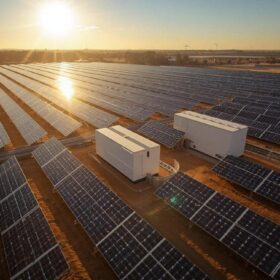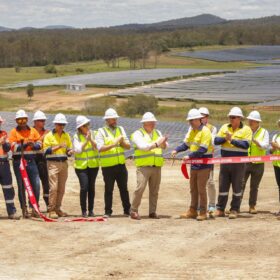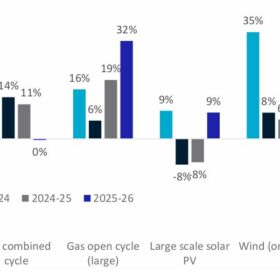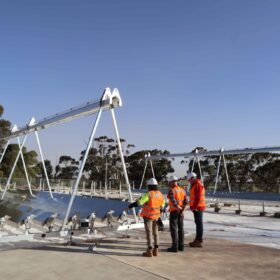Ausgrid’s pilot aims to harness the unused rooftop solar potential currently sitting in the existing network – particularly on commercial and industrial buildings – and ensure the resulting benefits go back into the local community.
Ausgrid Chief Executive Officer Marc England said the pilot will test the hypothesis that by unlocking current challenges in the existing market, communities will benefit from cheaper and more equitable electricity.
“The AER asked for proposals to facilitate access to the benefits of solar and storage and bring down prices, and this is what this pilot aims to deliver,” he said.
“Importantly, the trial will allow everyone – including renters and those living in apartments – to benefit from solar power, even if they don’t have their own panels or batteries.”
Mr England said the proposal addresses two key issues currently holding back a more equitable transition and cheaper prices.
“If you live in an apartment, or rent, or do not have the money to spend on your own electricity assets, then currently you struggle to access the benefits of solar and storage,” he said.
“Commercial and industrial businesses also struggle to get value from filling their roofs with solar and selling surpluses into the grid because current wholesale prices are driving the price of energy below costs.
“This trial sees the cost savings go back to the local community and encourages private investment in rooftop solar by creating value for locally generated energy.”
The two sites identified for the pilot are Mascot-Botany in Sydney and Charmhaven on the state’s Central Coast.
“In Mascot alone, there is 112 MW of untapped rooftop solar potential, which is enough to power the equivalent of 23,000 homes,” Mr England said.
“With approximately 68% of residents living in apartments and 50% renting in Mascot – it is ideal for testing equitable solar access models for those who can’t access or afford solar or behind-the-meter batteries.”
Mr England said the trial would offer a number of other benefits including job creation for installers.
“As well as electricity supply close to demand being the cheapest outcome for customers, this proposal will help Ausgrid manage peak demand, stabilise the grid and increase network utilisation, reducing the need for expensive future upgrades,” he said.
“These are outcomes that put downward pressure on prices now and avoid future increases across the network. The pilot will create jobs for solar installers, which is positive for licenced electricians and Accredited Service Providers.”
“It will also demonstrate the potential, when urban areas take on some of the heavy lifting currently going on in the outback, that we have to de-risk the need for as much expensive high voltage transmission.”
Ausgrid’s proposal was submitted in May 2025, following the AER’s February request for network-led solutions to facilitate greater access to, and orchestration of, Consumer and Distributed Energy Resources through the AER’s regulatory sandbox process.
The public consultation process is a key part of the AER’s review of the proposal and Ausgrid looks forward to the engagement.






By submitting this form you agree to pv magazine using your data for the purposes of publishing your comment.
Your personal data will only be disclosed or otherwise transmitted to third parties for the purposes of spam filtering or if this is necessary for technical maintenance of the website. Any other transfer to third parties will not take place unless this is justified on the basis of applicable data protection regulations or if pv magazine is legally obliged to do so.
You may revoke this consent at any time with effect for the future, in which case your personal data will be deleted immediately. Otherwise, your data will be deleted if pv magazine has processed your request or the purpose of data storage is fulfilled.
Further information on data privacy can be found in our Data Protection Policy.